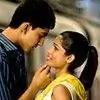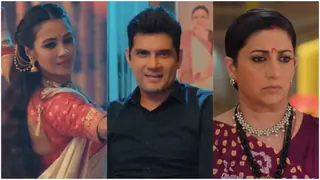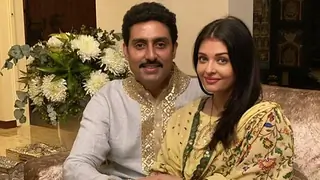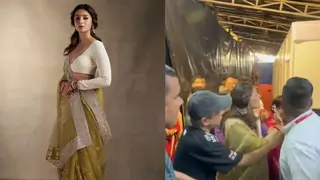| The man who designed Tiranga Few of us associate the name of Pingali Venkayya with anything else other than as being the original designer of the national flag. But how many of us know that this versatile genius was a prolific writer, a Japanese lecturer and a geophysicist? Born on August 2, 1876 to Hanumantharayudu and Venkataratnamma at Bhatlapennumaru in the Divi taluk in Krishna district, Pingali was a precocious child. After finishing his primary education at Challapalli and school at the Hindu High School, Masulipatnam, he went to Colombo to complete his Senior Cambridge. Enthused by patriotic zeal, he enlisted himself for the Boer war at 19. While in Africa he met Gandhi, and their rapport lasted for more than half a century. On his return to India he worked as a railway guard at Bangalore and Madras and subsequently joined the government service as the plague officer at Bellary. His patriotic zeal, however, did not permit him to stagnate in a permanent job, and his quest for education took him to Lahore where he joined the Anglo-Vedic College, and learnt Japanese and Urdu. He studied Japanese and history under Prof Gote.
During his five years? stay in the north, he became active in politics. Pingali met many revolutionaries and planned strategies to overthrow the colonial rule. The 1906 Congress session with Dadabhai Naoroji witnessed Pingali emerging as an activist and a force behind the decision making committee. Here he met the famous philanthropist, the Raja of Munagala, and from 1906-11, he spent his time in Munagala researching on agriculture and the crops. For his pioneering study on the special variety of ?Cambodia cotton?, he came to be called ?Patti Venkayya?. Even the British were taken up by his contributions in the field of agriculture and conferred on him honorary membership of the Royal Agricultural Society of Britain.
Finally, this man went back to his roots at Masulipatnam and focused his energies on developing the National School (at Masulipatnam), where he taught his students basic military training, horse riding, history and knowledge of agriculture, soil, crops and its relation to nature. Not content with being a theoretician, Pingali's day-to-day activities also reflected a deep commitment to his liberal values. In 1914, he turned his agricultural land into an estate and named it Swetchapuram.
The prismatic colours of his personality reflected an unusual ray in the years 1916-21. After researching into 30 kinds of flags from all over the world, Pingali conceived the design of a flag which became the forbearer of the Indian national flag. Though all credit goes to Pingali for having conceived the national flag in its present form, its antecedents can be traced back to the Vande Mataram movement.
For a brief history of the origins of the Indian flag we have to go back to August 1, 1906 to the Parsee Bagan Square (Green Park) at Calcutta where the first national flag of India was hoisted. This flag was composed of horizontal stripes of red, yellow and green. The strip on the top had eight white lotuses embossed in a row. On
the yellow strip were the words Bande Mataram in deep blue
Devanagari script.
Madame Cama and her group of exiled revolutionaries hoisted the second flag in Paris around 1907. This was similar to the first flag except that the top strip had only one-lotus andseven stars denoting the saptarishis. This was exhibited at a socialist conference in Berlin. By the time the third flag went up in 1917, the political struggle had taken a definite turn. Annie Besant and Tilak hoisted the flag during the Home Rule Movement with an addition in the left hand corner (the pole end), the stamp of the Union
Jack.
There was also a white crescent and star in one corner indicating the aspirations of people of those years. The inclusion of the Union Jack symbolised the goal for dominion status. However, the presence of the Union Jack indicating a political compromise, made the flag unacceptable to many. The call for new leadership brought Gandhi to the fore in 1921 and through him the first tricolour flag.
The years 1921-31 constitute a heroic chapter in not only Pingali Venkayya's life but also in the history of the freedom struggle of Andhra. The AICC met at a historic two day session at Bezwada (March 31 and April 1, 1921). It was at this session that this frail middle aged gentleman, Pingali, approached Gandhi with the flag he designed for India. Pingali?s flag was made of two colours, red and green representing the two major communities of the country. Thus the Indian flag was born but it was not officially accepted by any resolution of the All India Congress Committee. Gandhi?s approval made it popular and it was hoisted at all Congress sessions. Hansraj of Jallandar suggested the representation of the charkha, symbolising progress and the common man. Gandhi amended, insisting on the addition of a white strip to represent the remaining minority communities of India.
A consensus could not be reached until 1931. The designing of the colours in the flag ran into rough weather even as communal tension broke out on the issue of its interpretation. The final resolution was passed when the AICC met at Karachi in 1931. The flag was interpreted as saffron for courage, white for truth and peace, and green for faith and prosperity. The dharma chakhra which appears on the abacus of the Sarnath at the capital of Emperor Ashoka was adopted in the place of spindle and string as the emblem on
the national flag.
Interpreting the colours chosen for the national flag, Dr. Sarvepalli Radhakrishnan explained the saffron colour denoted renunciation or disinterestedness of political leaders towards material gains in life. The white depicted enlightenment, lighting the path of truth to guide our conduct. The green symbolised our relation to the soil, to the plant life here on which all other life depends. The Ashoka wheel in the centre of the white strip represented the law of dharma.
Speaking philosophically, he remarked that the national flag ought to control the principles of all those who worked under it. The wheel denoted motion and? India should no more resist change as there was death in stagnation?. Pingali Venkayya, the illustrious visionary, the designer of the national flag died, unhonoured on July 4, 1963, in conditions of poverty. It was only a few years ago that his daughter began to receive pension from the government. There is not even a memorial in his hometown Machilipatnam to the man who brought such glory to Andhra. Even the original house has been razed to the ground. |































